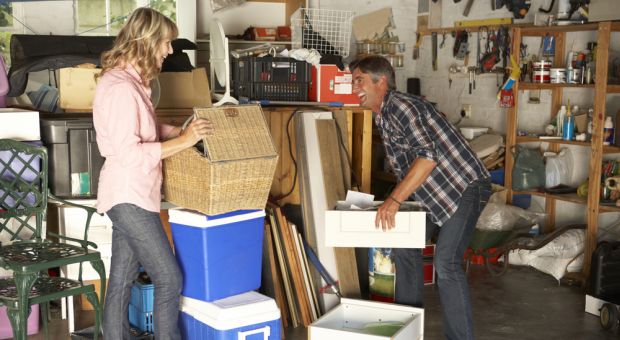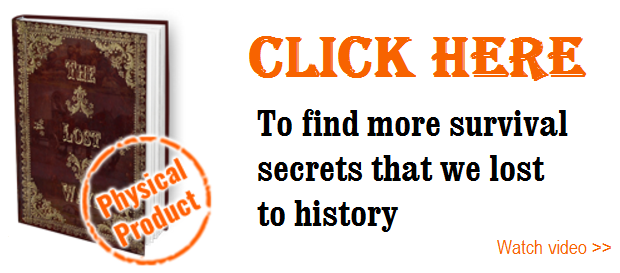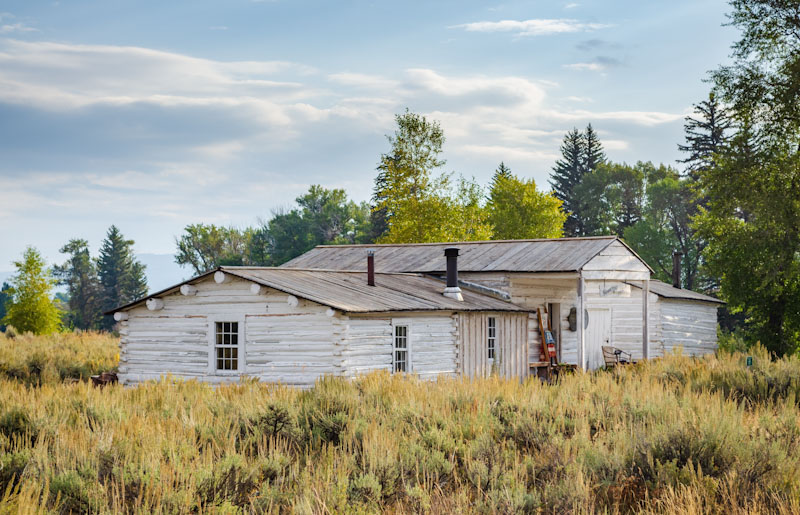Spring isn’t really right around the corner; we’re still in the middle of winter.
For many of us, this is a time for staying indoors and staying warm. It’s a good time for doing those “indoor projects” that we aren’t going to want to do when summer rolls around. That makes it an especially good time to do things like cleaning basements and attics, even though there really isn’t any good time for those sorts of projects.
But as preppers, I believe that we should clean out those areas on a yearly basis. I don’t say that for the normal reasons that people go through the trouble of cleaning out their storage; but as an important part of our prepping. You see, anything that’s stored for a long period of time needs to be checked on, just to make sure it’s okay.
I don’t know about you, but I’ve had things go bad in storage before; some of which were quite surprising. The only way to know if such a thing is happening, is to check your stockpile periodically, making sure that everything is okay. I find that just after the first of the year is an opportune time to do this; the weather is good for it and I’m not working on other projects outside.
Regular checks of your stockpile also provides you with the opportunity to perform preventative maintenance on your equipment and supplies. Things left alone tend to go bad, eventually becoming worthless; but things which are properly cared for will last.
Things Going Bad
We all put a lot of effort into packing our food for long-term storage, with the expectation that our food will be able to last 20 years or more. Likewise, we stock up on canned goods, as they are supposed to last that long as well. The whole idea of expiration dates on canned food is commonly understood to be false within the prepping community, as we know that canned goods can last a whole lot longer.
There are sufficient stories of canned food that was 40, 60 or even 100 years old that had survived all those years and was still edible, containing most of the original nutrients. Ample evidence is also available to show that dried grains will not only last years, but centuries, as long as it is kept dry and safe from insects and rodents. Numerous ancient tombs, on multiple continents have been found with dried grains that are centuries old, stored without the benefits of modern technology.
But all of these exceptional examples of food storage depend on one thing in common; the method working perfectly. Yet nothing made by human hands is that perfect. Therefore, we must accept the fact that some small percentage of our food stores are going to be damaged over time.
Evan canned foods can spoil, if something goes wrong with the canning process. In some cases, this can be something as simple as the coating on the inside of the can being imperfect and allowing the naturally-occurring acid in the food to attack the metal can. That’s what happened in the case below, rendering a can of mandarin oranges unusable.
Canned foods are not the only ones which can go bad; dry foods can as well. Actually, dried foods can more easily go bad than canned ones, simply because most of them aren’t packaged properly for long-term storage. Unless we repack them ourselves, it is easy for them to go bad. All it takes is a little moisture. Repacking these foods in five-gallon buckets, lined with aluminized Mylar bags is the normal way we avoid this problem.
But, while that method does a good job of keeping moisture out, it only does so if executed properly, with food that is already dry and without anything that contains moisture. We don’t normally put moisture absorbers inside those bags, along with the oxygen absorbers. So if there is already moisture in the bag or we don’t seal it properly, our food can be lost.
The other problem with most dried foods, such as grains, sugar, cereal and pasta, is that they can be eaten by insects and rodents. This is the other reason why such foods are often repacked, rather than trusting in the factory packaging. But if insects get in before the package is sealed or if the packaging gets damaged, that food can still be consumed.
Speaking of consumption, I’ve had problems with family members consuming items that were stored away as part of my prepping stockpile. Perhaps you’ve never had that problem, but if you don’t check your stockpile to find those items, there is no way you’ll ever know about them.
This Goes for Non-Food Items as Well
The possibility of stored items going bad isn’t limited to just food items; other things can go bad as well. One of the easiest ways for this to happen is through water leaks in our homes. Items like toilet paper can be directly destroyed by water leaks, especially if we don’t take the precaution of double-wrapping them in plastic.
Toilet paper isn’t the only thing which can be damaged by water leaks. There are a lot of things, ranging from razor blades to clothing which can become damaged by water leaks. Yet not all of these items are packed for long-term storage as carefully as our food stockpile is. Without checking them regularly, we have no way of knowing whether they have become damaged.
Another possible problem is leakage from containers. I’ve lost stockpiled supplies like lamp oil and cleaning products because of pinhole leaks in their containers that I didn’t detect ahead-of-time. While some items, like bleach, are obvious when they leak, not everything is. This is especially true when they are stored in places like garages, where there are a variety of other chemical smells, or attics, which we don’t visit frequently enough to encounter the smells associated with these leaks.
We have to realize that pretty much anything can become damaged in storage, whether it be by oxidation, water damage or the drying out of seals and lubricants. The only effective defense against this problem is to regularly check the items we have stored, ensuring that they are okay.
Some items, especially mechanical ones, need to be used from time to time, just to keep them in good working order. Regular use can lubricate seals, keeping them from drying out, circulate lubricant though metal parts, reducing wear on startup, combat rusting and keep dirt from blocking airways. It also gives you the chance to verify that these items are in proper working order, ready for the day you need them. if any maintenance needs to be done, it will become obvious, allowing you to do that maintenance work before you actually need to use the item.
Verify Your Inventory
I mentioned a moment ago the possibility of family members using items from your stockpile, without you knowing it. As my kids grew, they began to undertake a lot of their own cooking. This was great in some ways, but they didn’t seem to understand that some food was set aside as prepping supplies. If they couldn’t find something they needed in the kitchen, they’d just pull it from our stockpile, without saying anything.
What this meant was that our inventory sheets were never as accurate as I would have liked. So checking my stockpile annually was almost a requirement. It gave me the chance to verify what I had and see what needed replenishing, in addition to verifying the condition of everything in my stash.
In addition to giving me the means of checking my inventory, to verify what I had on-hand, doing that annual inventory gave me a good reminder of where I had everything stored. While I had that noted in my inventory sheets, that’s not the same as putting eyeballs on the items and knowing where to find them. As we had an extensive inventory of survival supplies, especially food, it was scattered around in a variety of different places. Seeing those places and what was in them was valuable.
But there’s one other thing that invariably happens when checking your inventory; you find things you forgot you had. This usually isn’t the big stuff, but things that are small enough that you don’t bother to mark them down on your inventory sheet.
That just happened to me the other day, as I was going through some boxes and checking my inventory. I found:
- A package of 100 safety pins
- Mantles for my Coleman lantern
- A rebuild kit for the pump on my Coleman “dual-fuel” camp stove
- Some first-aid supplies that were stored in the wrong place
- A multi-tool that I had misplaced
- A spring kit for my carry pistol
- Some spare tactical flashlights I had bought and forgotten about
- A portable sewing kit
This isn’t all the list; just enough to give you an idea. We all buy things for use or for our stockpiles, put them away somewhere and promptly forget about them. While those things will still come in handy in the wake of a disaster, they might be even more handy if we know where they are when we need them. doing an annual check and inventory of your stockpile allows you to find those things and move them to a more appropriate storage space, should you need to.
Repurposing
The average American attic, basement or garage is filled with things we might need “someday.” I know 70 year old grandmothers who still have baby cribs and high chairs forgotten in their attics, which they had saved in case they had another baby. Obviously, that’s no longer possible; but the really crazy part is that they went out and bought those things for their grandchildren, because they forgot they had them.
We are a society filled with clutter; much more than we need. All too much of this clutter does nothing more than take up space in our homes, which could be used for other things. At the same time, many of those things could be useful to others, either giving them away or selling them in a garage sale.
Selling off those things that we aren’t using in a garage sale is also a good way to raise money, which can then be used for other prepping stockpiling or prepping projects, not only giving you more space for storage, but also get you some help in buying the supplies to store in that space.
At the same time, you may very well find things in your search of the hidden nooks and crannies, which can be repurposed for survival. One important part of survival is the ability to scavenge useful items and put them to use. That often means putting them to a use that is different than what they were originally intended.
Repurposing requires creativity, so some people are naturally better at it than others. But this doesn’t mean that it requires a special person to repurpose effectively. Rather, it just means that some of us need to work harder at seeing the potential in something we find hiding in our attic or basement. At the same time, those who don’t immediately find a use for something can often find much more unusual uses for it, which the person who sees a use in everything will often only see something that is commonly done. So don’t let any natural bent or lack thereof get in your way.
Many of these items will need to be modified in some way, in order to make them useful for survival. So, some basic ability as a do-it-yourselfer, as well as a basic workshop can be useful in making it possible to repurpose things you find. My wife and I are finding this right now, with some projects she has found to do. She’s the one with the idea, but I’m the one with the workshop and know how to make those happen. Together, we’re making the things we find into useful items for survival or for our home.










